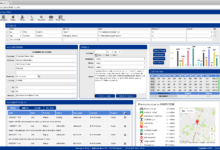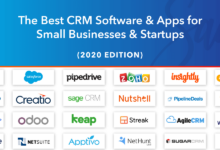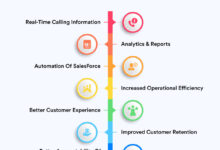CRM Demo: A Guide to Success
CRM Demo: Landing a new client often hinges on a killer demo. This isn’t just a software showcase; it’s a compelling narrative showcasing how your CRM solves real-world problems and boosts efficiency. We’ll explore crafting a demo that resonates, from understanding client expectations to mastering the follow-up.
This guide dives deep into structuring a compelling CRM demo, highlighting key features, and crafting a persuasive narrative that converts prospects into paying customers. We’ll cover everything from designing an effective agenda to handling technical glitches and addressing post-demo objections. The goal? To transform your CRM demo from a simple presentation into a powerful sales tool.
Crafting a Persuasive Narrative
Let’s face it, a CRM demo is more than just a software showcase; it’s a story about increased efficiency, happier customers, and a healthier bottom line. To truly resonate with potential clients, we need to weave a compelling narrative around the successful implementation of our CRM. This means going beyond the features and focusing on the transformation it brings.
A successful CRM implementation isn’t just about ticking boxes; it’s about solving real-world problems. Think about a small bakery struggling to manage orders, track inventory, and maintain customer relationships. Our CRM steps in, streamlining operations, improving communication, and ultimately boosting sales. This is the story we need to tell – a story of tangible results and demonstrable value.
A Compelling Case Study: The “Sweet Success” Bakery
Imagine the “Sweet Success” bakery, initially overwhelmed by manual processes. They were losing track of customer preferences, struggling with inventory management, and missing opportunities for repeat business. After implementing our CRM, their order management became seamless, allowing them to fulfill orders efficiently and accurately. Inventory tracking prevented stockouts and minimized waste. The integrated marketing features allowed them to personalize communications with customers, leading to increased loyalty and repeat business. Their sales increased by 25% within six months, a direct result of the CRM’s impact on efficiency and customer engagement. This is the kind of success story that resonates.
Strong Call-to-Actions
Providing clear and compelling calls to action is crucial for driving engagement after the demo. We should offer several options, catering to different levels of engagement. For example: “Schedule a personalized consultation to discuss your specific needs,” “Download our case study showcasing similar successes,” or “Request a free trial to experience the CRM firsthand.” These calls to action should be presented clearly and prominently throughout the demo and reiterated at the end.
Active Listening and Tailored Demos
Before the demo, we should thoroughly research the potential client’s business, industry, and challenges. During the demo, active listening is key. We should pay close attention to their verbal and nonverbal cues, asking clarifying questions and adapting the demo to address their specific concerns and priorities. For instance, if they express concern about data security, we should highlight the CRM’s robust security features. If they’re focused on sales pipeline management, we should showcase those specific features in detail. A tailored demo demonstrates that we understand their needs and are committed to providing a solution that fits their unique circumstances.
Visual Representation of the CRM’s User Interface and Workflow
Imagine the CRM’s dashboard as a clean, intuitive control center. At a glance, users see key performance indicators (KPIs) like sales figures, customer satisfaction scores, and upcoming appointments, all displayed in easily digestible charts and graphs. The main navigation bar at the top provides quick access to core modules: Contacts, Deals, Marketing, and Reporting. Each module has a clear, consistent layout. For instance, the “Contacts” module displays customer information in a user-friendly format, including contact details, purchase history, and interaction logs. The workflow is streamlined, with intuitive drag-and-drop functionality for managing deals and tasks. A visual representation of this would emphasize the ease of use and efficiency of the system. Imagine a smooth, seamless transition between different modules, with minimal clicks required to complete tasks. The overall aesthetic is clean, modern, and uncluttered, ensuring a positive user experience.
Post-Demo Follow-Up Strategies
A successful CRM demo is only half the battle. Effective follow-up is crucial for converting prospects into paying customers. This involves a multi-faceted approach encompassing email communication, addressing concerns, gathering feedback, and ultimately, closing the deal.
Sample Email Sequence for Follow-Up
A well-structured email sequence keeps your CRM demo top-of-mind. The goal is to nurture the lead and guide them towards a purchase decision. Here’s a sample three-email sequence:
- Email 1 (Sent within 24 hours): Subject: Following Up on Your CRM Demo. Body: Thank you for taking the time to explore [CRM Name] today! I’ve attached a recording of the demo for your convenience. Let me know if you have any immediate questions.
- Email 2 (Sent 3 days later): Subject: Key Takeaways from Your [CRM Name] Demo. Body: This email highlights some key features discussed, focusing on how they can address your specific needs as mentioned during the demo. Is there anything you’d like to explore further before we schedule a next step?
- Email 3 (Sent 7 days later): Subject: Ready to Move Forward with [CRM Name]? Body: This email briefly reiterates the value proposition of the CRM and includes a clear call to action, such as scheduling a consultation to discuss pricing and implementation.
Addressing Customer Objections or Concerns
Prospective clients often have reservations. Addressing these head-on builds trust and demonstrates your expertise. Common objections might include cost, complexity, or integration challenges. For each objection, provide specific examples of how your CRM addresses these concerns. For example, if cost is an issue, highlight different pricing tiers or ROI calculations demonstrating long-term savings. If complexity is a concern, showcase the user-friendly interface and offer training resources. For integration challenges, discuss successful integrations with similar systems.
Collecting Feedback and Improving Future Demos
Gathering feedback is essential for continuous improvement. Send a short survey after the demo asking about their experience, what resonated most, and areas for improvement. Open-ended questions allow for valuable qualitative insights. Analyzing this data can help refine your demo presentation, improve your messaging, and tailor the experience to better meet client needs. For example, if many respondents found a specific feature confusing, you can revise that section of the demo for clarity.
Converting Demo Attendees into Paying Customers
Converting demo attendees requires a clear and concise value proposition. This means demonstrating a clear ROI, highlighting the CRM’s unique features and benefits, and addressing any lingering concerns. Offer a limited-time discount or incentive to encourage immediate action. Personalize your follow-up communication based on the individual’s needs and pain points. Finally, make the next steps clear and easy to follow, such as providing a straightforward proposal or scheduling a consultation to discuss implementation. A successful case study showcasing a similar company’s positive experience with the CRM can significantly influence a potential customer’s decision.
Final Wrap-Up
Ultimately, a successful CRM demo isn’t about dazzling with features; it’s about demonstrating tangible value. By understanding your audience, tailoring your presentation to their needs, and following up effectively, you can transform a CRM demo into a highly effective sales strategy. Remember, it’s a conversation, not a lecture – listen actively, address concerns directly, and leave prospects feeling confident in their decision to choose your CRM solution.





